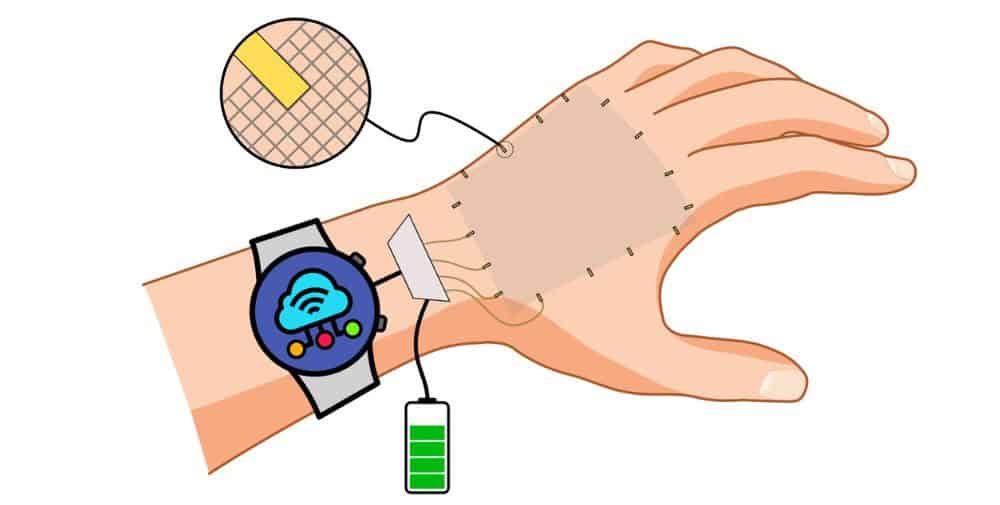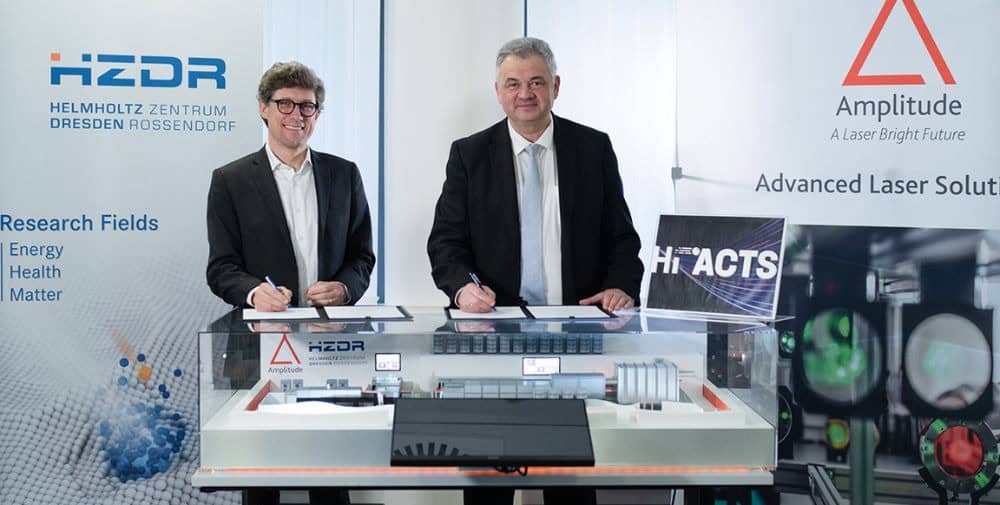
Originally developed for robotics, e-skins imitate the properties of real skin. They allow robots to feel or replace lost human senses. Some even recognize chemical substances or magnetic fields. But the technology has its limits. Highly functional e-skins are often impractical as they require a lot of electronics and large batteries. “Previous technologies detect magnetic fields with many individual sensors and transistors – similar to the touch sensors in a smartphone display. Our idea was to develop a system that is more energy-efficient and better suited to humans and soft human skin,” says Denys Makarov from the Institute of Ion Beam Physics and Materials Research at the HZDR.
Lighter, more flexible and more intelligent
The researchers therefore replaced the rather stiff and thick substrates that usually contain the electronics with a thin, light and flexible membrane that is just a few thousandths of a millimetre thick. The entire membrane is optically transparent and perforated so that the artificial skin remains permeable to air and moisture and the real skin underneath can breathe.
However, this wafer-thin substrate would only be suitable for holding electronic components to a limited extent. Instead, the new E-skins work with a magnetosensitive functional layer that serves as a global sensor surface and makes it possible to precisely localize the origin of magnetic signals. The principle: magnetic fields change the electrical resistance of the material. A central analysis unit calculates the signal location from these changes. This not only comes closer to the functional principle of real skin, but also saves energy.
Artificial skin, almost human perception
“Such large-area magnetosensitive smart skins have never existed before,” says Pavlo Makushko, PhD student at the HZDR and first author of the study. “Conceptually, e-skins now function similarly to the human body. With real skin, it doesn’t matter where I touch it: The signal reaches the brain via the nerves, is processed there and the brain recognizes the point of contact. With the new E-skins, we now use a single global sensor surface – just like our skin. And a single central readout unit reconstructs the signal – just like our brain”.
This is made possible by tomography, a process that is also used in MRI or CT scans in medicine. It reconstructs the position of a signal from many individual images. This technology is new for E-skins with magnetic field sensors – it was considered too insensitive for the low signal contrast of conventional magnetosensitive materials. The fact that we have succeeded in experimentally confirming this method is a significant technical success of our work, emphasizes Makushko.
Experiencing our environment through magnetic glasses
The new E-skins make it possible to track signal paths without gaps. This enables applications that recognize digital patterns: be it an intelligent magnetic pen, contactless interactions in virtual reality or operating a smartphone display in extreme environments such as diving. Often, it is not the human but the machine that wears the artificial skin with a magnetic sense.
At the same time, magnetic field sensors are less susceptible to interference than conventional electronics. Robotic systems could use them to detect movements – even in complex environments where other methods fail. In winter, people could operate a smartphone equipped with optically transparent magnetic sensors with a magnetic pad on the finger of a glove without having to fear interference from external electronics. The magnetic sense does not become a compass, but a unique communication channel for man and machine.
Publication
P. Makushko, J. Ge, G. S. Cañón Bermúdez, O. Volkov, Y. Zabila, S. Avdoshenko, R. Illing, L. Ionov, M. Kaltenbrunner, J. Fassbender, R. Xu, D. Makarov: Scalable magnetoreceptive e-skin for energy-efficient high-resolution interaction towards undisturbed extended reality, in Nature Communications, 2025 (https://doi.org/10.1038/s41467-025-56805-x)
Contact
Dr. Denys Makarov | Head of Smart Materials and Functional Elements
Institute of Ion Beam Physics and Materials Research at HZDR
Tel: +49 351 260 3273 | E-Mail: d.makarov@hzdr.de
– – – – –
Further links
👉 www.hzdr.de
Graphic: P. Makushko / HZDR




